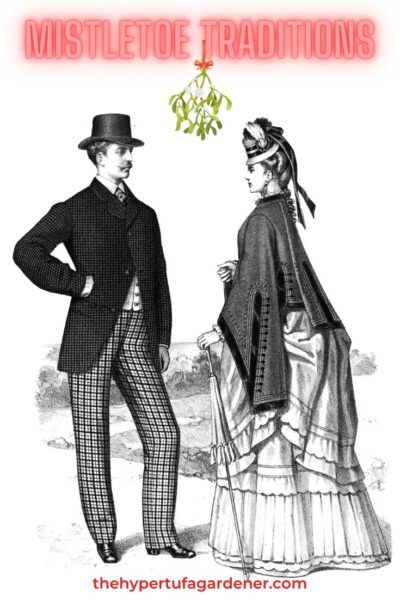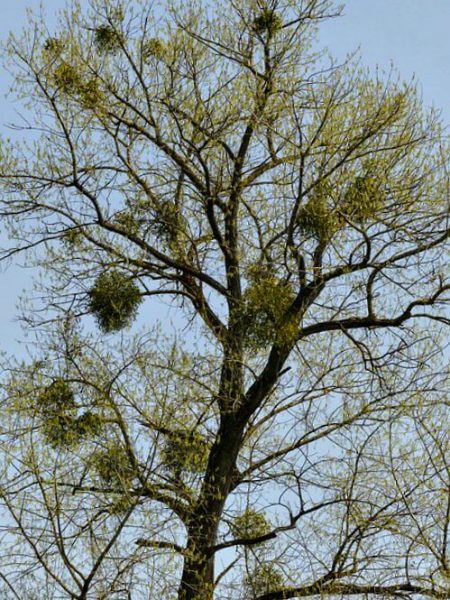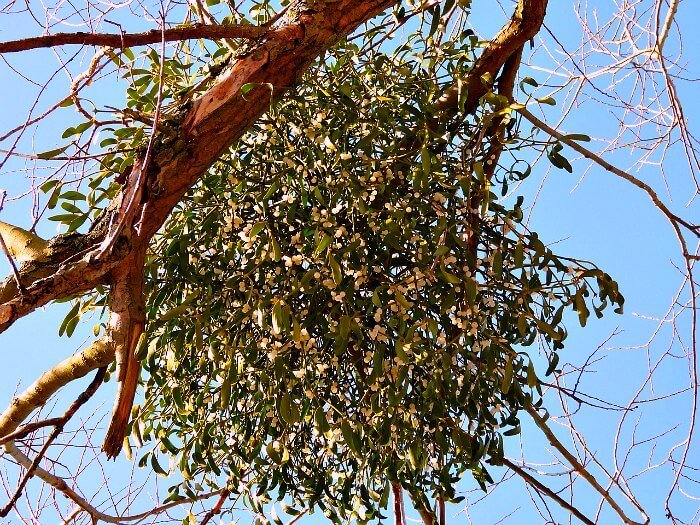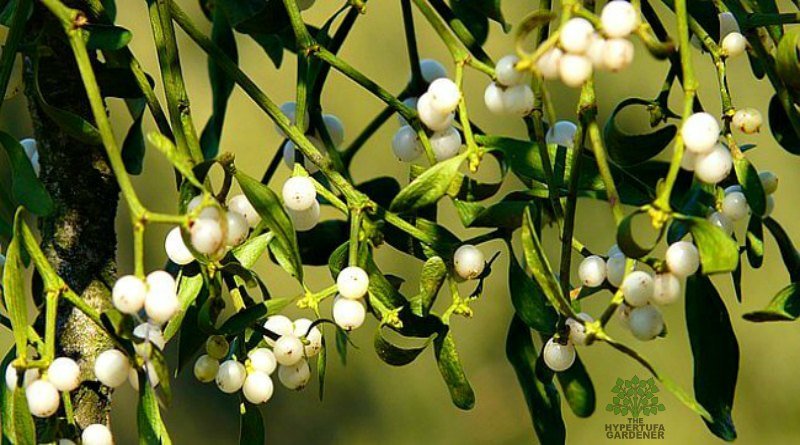Under The Mistletoe At Christmas
Meet under the mistletoe and get a kiss!
The sweetest tradition or custom regarding what could happen under the mistletoe says that hanging it in a doorway or entrance would cause all who meet or passed under it together to kiss. In some traditions, and I guess this would only be possible if the berries are attached since each kisser plucks a berry off the sprig. Then when all the berries are gone, there are no more kisses allowed under this sprig! Go find another!
More posts about my Backyard Flower Garden here.
Even though mistletoe doesn’t typically grow this far north (Ohio), it is still a part of Christmas tradition. We still feel that if we hang a sprig of mistletoe over our door frame, then of course, when we pass under the mistletoe, we will get a kiss. ( Of course, in today’s world, kisses are more common than ants at a picnic, but it was not the same in Victorian England.)

How did this kind of tradition develop from a semi-parasitic plant growing in the top of hardwood trees?
There are so many myths and legends, from the Celts to the Druids, Greeks and Romans, that it would be hard to list all of these. But the method of growth of the mistletoe plant lends itself to easy speculation by the observations of our ancestors .
Wouldn’t it seem possible that mistletoe had some mystical qualities when the mighty oak tree that it grew upon lost all of its leaves in winter, but yet the ball of mistletoe up in its branches remained green?

You can see how stories would develop since it had such “magical properties.”
Mistletoe (Phoradendron leucarpum) is a semi-parasitical plant growing on a host plant, usually on oaks, pecan, black gum and hickory among others. This is a plant growing in warmer regions and it is not usually found north of the Ohio River.
There is also a dwarf mistletoe (Arceuthobium pusillum) which grows farther north and typically on conifers. It is a smaller version of the three-foot spread of the Phoradendron leucarpum, and this Arceuthobium pusillum usually creates the “witches’ brooms” we see on those conifers.
These witches’ brooms offer a nesting place for many birds so mistletoe has its place in the forest ecosystem. And there is also a European mistletoe (Viscum album) which has been known to grow in California.

Mistletoe grows upon the branches of a tree as a semi-parasite. It sends root structures called haustoria which penetrate the tissues of the host and get nutrients and water from it.
But the mistletoe plant has chlorophyll and so it can make some of its own food so it does not entirely depend on the host for its nutrition.
Does Mistletoe Damage Trees?
A tree is not necessarily damaged by mistletoe unless it is infected at many sites. But since birds are the primary dispersal mechanisms of the mistletoe’s sticky seeds, it means that your tree has a diverse population of birds.
These infestations of mistletoe provide food for the birds and other animals since the berries are edible. So the mistletoe is not damaging the tree unless it is becoming overwhelming.
Mistletoe is poisonous to humans and domestic animals. It can range from mild stomach distress for children and dogs or cats, to death depending on how much is eaten, so be careful if decorating with it.
Remember, any plant can cause a severe reaction in a susceptible person.
So enjoy your opportunities under the mistletoe this year and remember all those ancestors who viewed it with such amazement.
Thanks for stopping by and be sure to visit the Facebook Page too!


